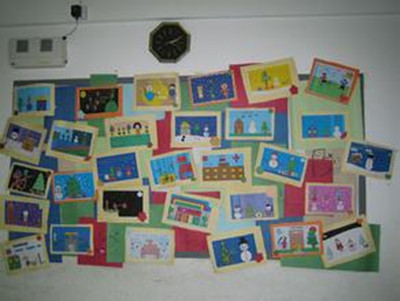Remember your kindergarten classroom?
还对你的幼儿园教室记忆犹新吗?
The maps on the wall, the charts of the seasons on bulletin boards, the alphabet over the blackboard?
墙上悬挂的地图,布告栏上的每个季度的课表,还有黑板上的字母表?
I know I spent hours staring at the brightly colored decorations—and not listening to what my teacher was saying.
我记得自己曾花数小时盯着这些明亮颜色的装饰图案—但老师讲的一句话也没听进去。
Maybe you did, too.
或许你也有同感。
And it looks like we're not alone.
并且好像不只是你和我这样。

The more decorations in a classroom, the more distracted students may be.
教室里面装饰越多,学生们或许就越容易分心。
So finds a study in the journal Psychological Science.
这是发表在《心理学科学》杂志上一项研究得出的结论。
Researchers observed five-year-olds in highly decorated classrooms and in classrooms that were relatively bare.
研究人员们分别对精心及相对简单布置的教室中的5岁儿童进行了观察。
And the kids were less able to hold their focus, spent more time off-task and had smaller learning gains in the busy rooms than in the bare rooms.
精心布置教室中的孩子们并没有将注意力全部放在学习上,更容易走神儿,记住的知识也没在相对简单环境的教室中的孩子们多。
At that young age, attention regulation skills aren't fully formed.
在年幼时,掌控注意力的技能还不甚完善。
And yet it's at that stage of development that children find themselves surrounded by decorations irrelevant to what they're learning at any given time.
然而也正是那个阶段,孩子们发现自己处于一间布置精美的教室中,但却和所要学习的知识完全无关。
The researchers are not prescribing a change from busy to bare rooms.
研究人员并没有表明精心布置的教室需要改变。
They say there is more research to be done.
还需要更多的相关研究证明。
But this study, along with previous work, suggests that the visual environment can affect how young children learn their reading, writing and rithmetic.
但这项研究,以及之前的相关研究工作,都建议视觉环境能够对幼儿的阅读,写作以及算术等基本能力产生影响。


